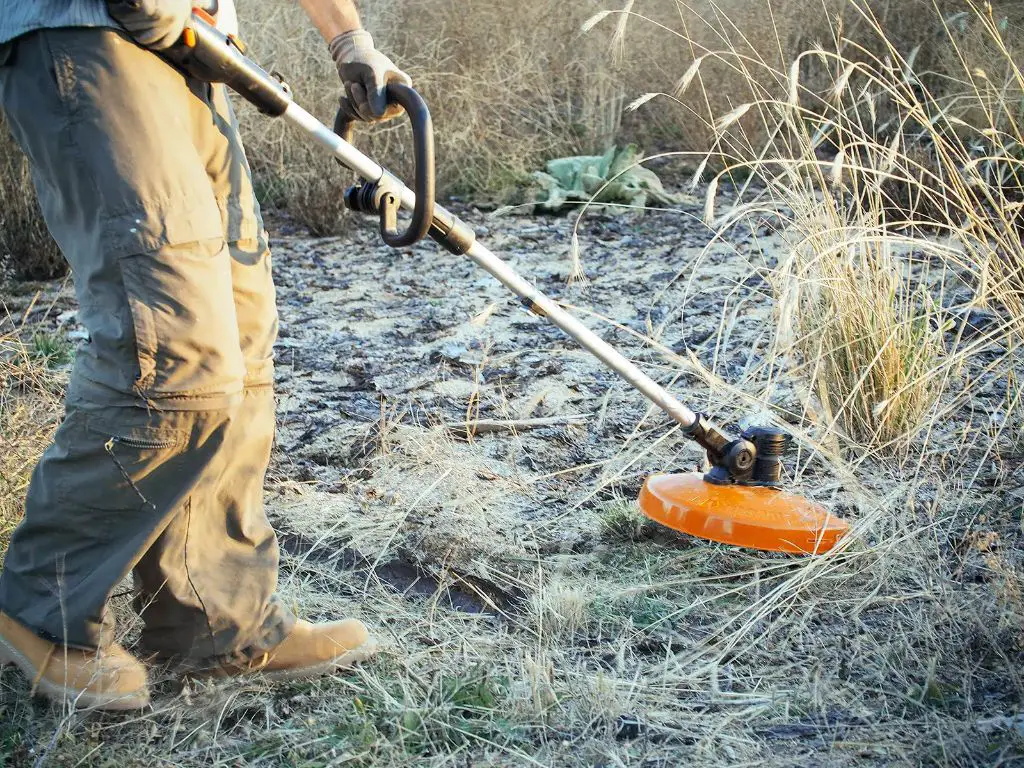The type of string you use on a weed eater can make a big difference in how well it performs. Selecting the right string type and diameter for your weed trimmer is important to get the best cutting action and avoid common issues like excessive string wear and breakage. In this article, we’ll look at the factors to consider when choosing weed eater string and the main types of trimmer line available.
Page Contents
String Type
There are two main types of weed eater string – nylon and plastic blends. Here’s an overview of each:
- Nylon string – This is the most common type of trimmer line. Nylon weed whacker string is durable, flexible, and resistant to breakage. It comes in different diameters to suit various trimmers. The main downsides are that nylon line can fray with extended use and is prone to welding (fusing together) in high heat.
- Plastic blend string – Weed eater lines made from a nylon/plastic blend aim to improve upon pure nylon string. Common blends include nylon with polyester or polyethylene. These modified trimmer strings are designed to be more resistant to welding and provide extra stiffness for a better cutting action. However, they are typically more abrasive than pure nylon and can wear down trimmer components quicker.
Most standard consumer weed whackers come pre-spooled with nylon line. For heavy duty use, plastic blend lines can offer better performance. But for light trimming, basic nylon string is often the most economical choice.
String Diameter
Weed eater string comes in a range of diameters, typically from 0.065″ up to 0.155″. The ideal diameter depends on several factors:
- The thickness the trimmer manufacturer specifies for the model.
- The maximum line diameter the trimmer head will accommodate.
- The size and density of the vegetation you need to cut.
Using string that is too thin or thick for your machine can lead to problems:
- String that is too thin can lack stiffness and be prone to breaking.
- Overly thick line may not fit properly into the trimmer head and can cause excessive wear on components.
Consult your owner’s manual for the recommended string diameter. As a general guide:
- Light trimmers: 0.065” – 0.085” line
- Average trimmers: 0.085” – 0.105” line
- Heavy duty trimmers: 0.105” – 0.155” line
If in doubt, choose a mid-range diameter and adjust as needed for your conditions.
Using the thickest line your machine can handle gives maximum cutting power through dense growth.
Common String Shapes
In addition to different materials and diameters, weed whacker string comes in various cross-sectional shapes. The most common are:
- Round – The standard circular shaped line. Provides a smooth cut and all-round performance.
- Twisted – Line with a twisted, spiral profile. Claims to offer better cutting action and lasts longer.
- Multi-sided – Shaped with several sides rather than round. Allows it to stay stiff and cut cleanly.
- Serrated – String with a saw-tooth edge. Designed to slice through thick vegetation with reduced vibration.
Round line is the most widely used as it feeds smoothly and works well across various tasks. Specialized shapes like serrated aim to boost cutting efficiency in specific situations like trimming thick grass. However, they can increase drag, noise and trimmer head wear.
Common String Materials
Here is a table summarizing the key properties of nylon and common nylon blend trimmer lines:
| String Type | Durability | Cutting Ability | Weld Resistance | Price |
|---|---|---|---|---|
| Nylon | Good | Moderate | Poor | Low |
| Nylon/Polyester | Better | Improved | Better | Medium |
| Nylon/Polyethylene | Excellent | Excellent | Best | High |
As the table shows, polyethylene blends offer the best all-round performance but at a higher price. Basic nylon gives good value for light use. Polyester mixes provide a compromise of improved durability and cutting at a moderate cost.
Recommendations
Based on the above comparisons, here are some general recommendations for choosing suitable string types:
- For light use, basic round nylon line from a reputable brand provides good performance at low cost.
- When trimming thicker vegetation, a more rigid plastic blend string will provide better cutting action.
- Match the diameter to the ideal range specified for your trimmer model and thickness of vegetation.
- Specialized string profiles like twisted or serrated offer benefits for specific situations if required.
- Be prepared to experiment with different strings to find the optimal one for your operating conditions.
- Consider purchasing pre-wound spools for quick, hassle-free reloads.
While price is a consideration, avoid going too cheap on string quality. A good quality string will pay for itself through better performance and reduced breakages over time.
Conclusion
The type of weed eater string you use can make a noticeable difference in cutting effectiveness. While nylon lines are adequate for light tasks, plastic blend strings stand up better to frequent use on thicker vegetation. Matching the diameter and shape to your specific trimmer model and trimming conditions is important. Testing different string types under your own operating conditions will help determine the optimal balance of performance, durability and value for money.
